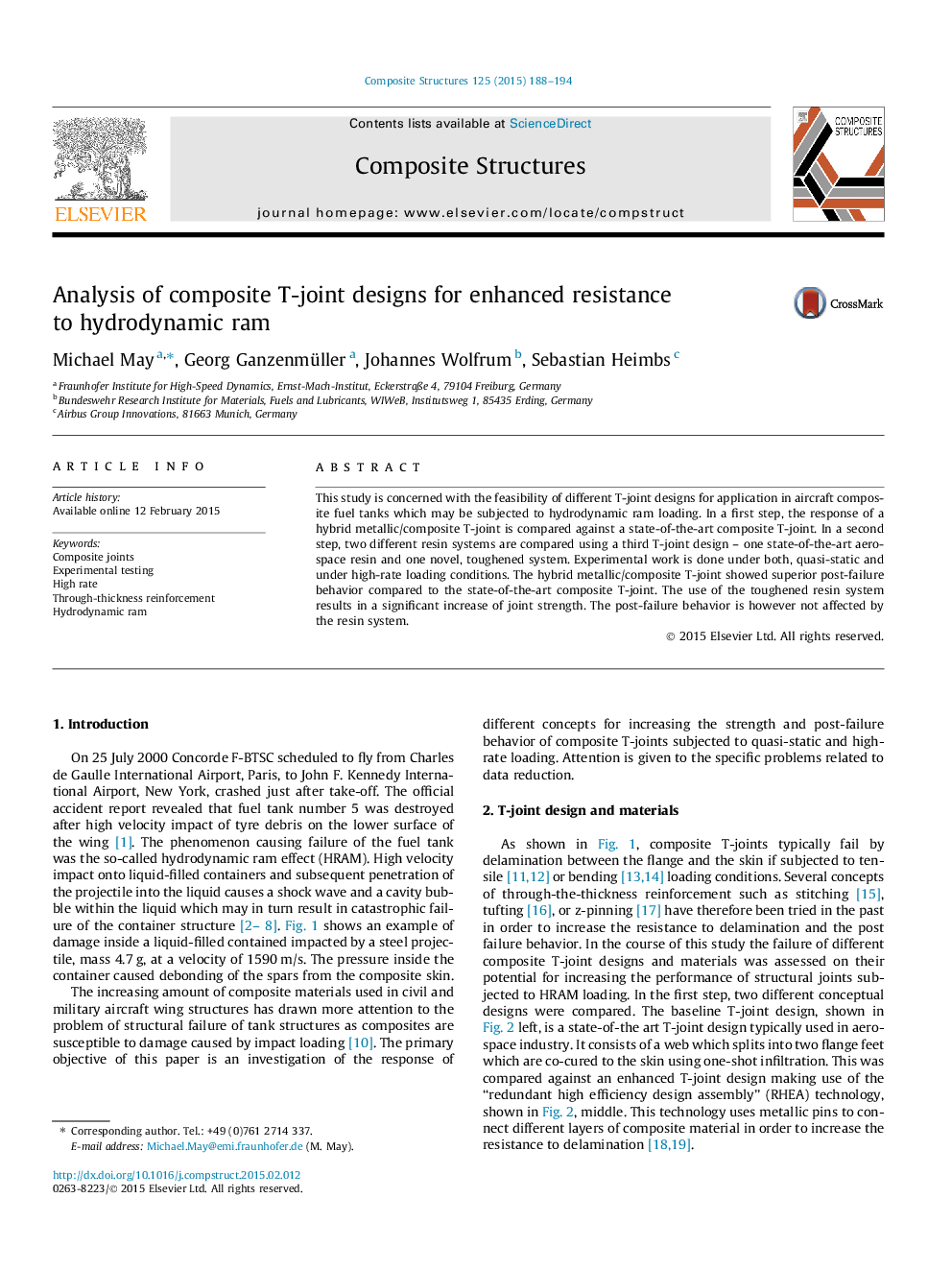| Article ID | Journal | Published Year | Pages | File Type |
|---|---|---|---|---|
| 6706886 | Composite Structures | 2015 | 7 Pages |
Abstract
This study is concerned with the feasibility of different T-joint designs for application in aircraft composite fuel tanks which may be subjected to hydrodynamic ram loading. In a first step, the response of a hybrid metallic/composite T-joint is compared against a state-of-the-art composite T-joint. In a second step, two different resin systems are compared using a third T-joint design - one state-of-the-art aerospace resin and one novel, toughened system. Experimental work is done under both, quasi-static and under high-rate loading conditions. The hybrid metallic/composite T-joint showed superior post-failure behavior compared to the state-of-the-art composite T-joint. The use of the toughened resin system results in a significant increase of joint strength. The post-failure behavior is however not affected by the resin system.
Keywords
Related Topics
Physical Sciences and Engineering
Engineering
Civil and Structural Engineering
Authors
Michael May, Georg Ganzenmüller, Johannes Wolfrum, Sebastian Heimbs,
